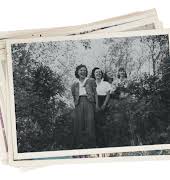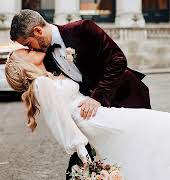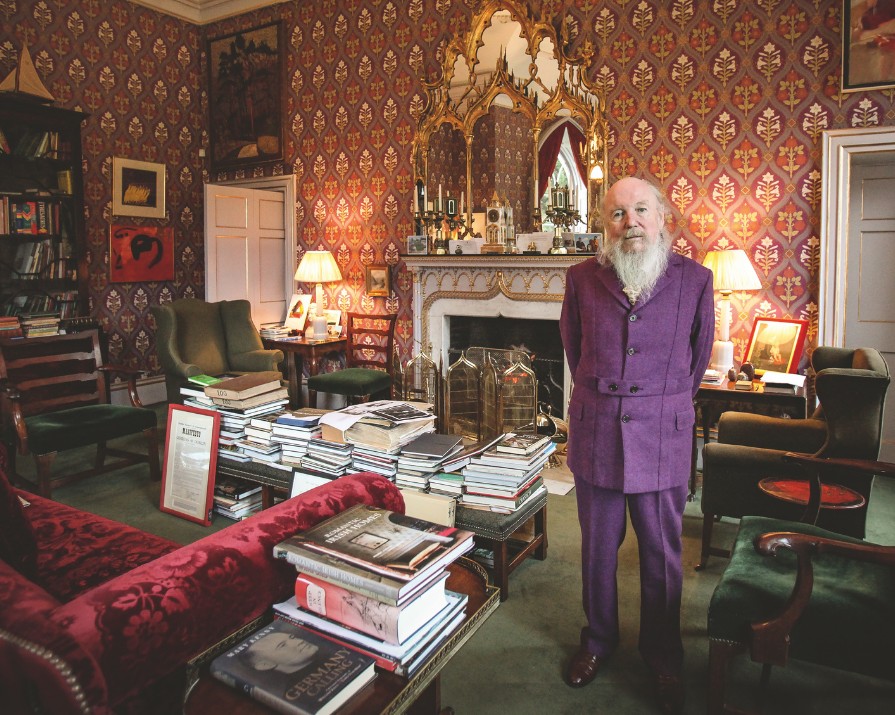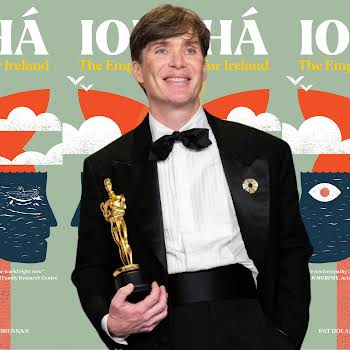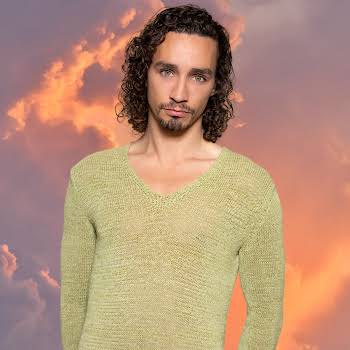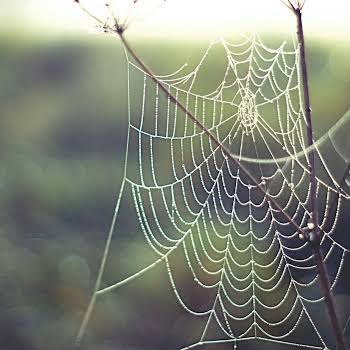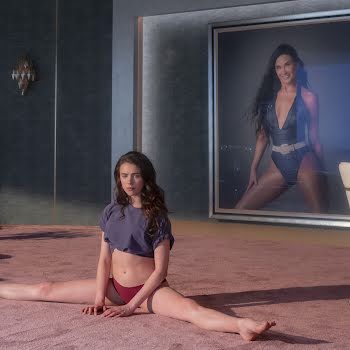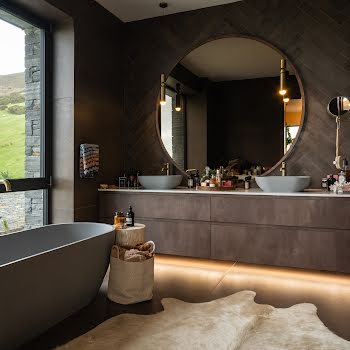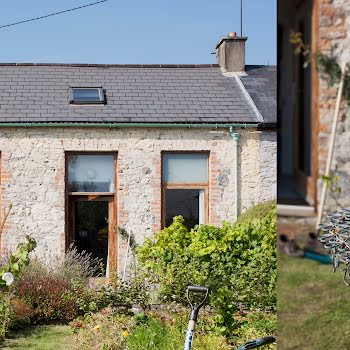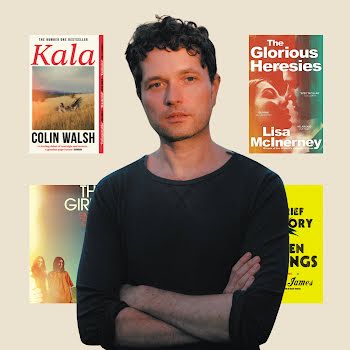Read an excerpt from Real to Reel: Garech Browne & Claddagh Records, by James Morrissey
By Sarah Gill
21st Nov 2023
21st Nov 2023
With contributions from President Michael D. Higgins, Bono and more, this incredible book provides unprecedented insight into the life of one of Ireland’s most intriguing figures.
Real to Reel: Garech Browne & Claddagh Records by James Morrissey is a new large-format hardback book together with a vinyl box set celebrating the life of Guinness heir Garech Browne and his quest to preserve Ireland’s musical and spoken-word heritage with Claddagh Records.
Garech Browne had many persona; there are many tales of eccentricity, wealth, lavish parties and countless famous friends – Mick Jagger, Brendan Behan, Kofi Annan, Brian Jones, Sean Connery, Pierce Brosnan, Seamus Ennis, Picasso, Samuel Beckett, Anita Pallenberg and Lucian Freud, to name just a few.
At his Luggala country estate in County Wicklow, gifted to him by his mother Oonagh Guinness – one of the famous ‘Golden Guinness Girls’ – he hosted parties that became legendary.
Advertisement
But for those who knew him best, Garech Browne was, first and foremost, one of the greatest archivists of Irish culture of all time. In establishing Claddagh Records in 1959, he made it his life’s work to preserve Ireland’s musical and spoken-word culture against the backdrop of an emerging pop-culture scene in the UK and further afield.
This hardcover book, 12” vinyl and poster presented in a rigid slipcase together chronicle the stories of both the world-renowned Claddagh Records record label and the extraordinary life of its founder Garech Browne. Read an extract below…

Chapter 6: Sartorial wizardry and a lost button
Garech Browne’s longstanding friend, the artist Anthony Palliser, once said of him:
“He was loyal in friendship, tolerant and curious. As a child, he ran away from every school he was forced to attend. Consequently, he was entirely self-taught, which in turn led to a unique vision of the world.”
Advertisement
And it was this unique perspective that led to the importance of the visual permeating all aspects of Garech’s life. From the outset, he wanted Claddagh albums to be different, distinctive and exceptional, in many instances at any cost, as was evidenced by the hefty fees paid to some artists. He obsessed about the design and content of Claddagh’s album sleeves, while leaving the recording process to the artists, producers and engineers.
Album releases were sometimes delayed for days, months, and in some cases, even years because of Garech’s fastidiousness and procrastination. It was a search for perfection that could not always be achieved quickly.
When Claddagh was set up, Garech’s photographer of choice was Jeffrey Craig whose work was featured on albums by Leo Rowsome, Frederick May, Jack MacGowran, Derek Bell, Tommie Potts, Sarah & Rita Keane, and Paddy Moloney & Seán Potts. Craig’s sudden, tragic death in a fire in England was a source of great personal loss to Garech.
Other photographers who worked on Claddagh albums included Angus Forbes, Claude Virgin, Roy Esmonde and Jacqueline O’Brien (wife of the legendary horse trainer, Vincent O’Brien), who was credited with the front cover photograph of The Chieftains’ album Music from Ballad of the Irish Horse.

Garech did his best to imbue his Claddagh staff with the same passion for the album artwork they were releasing:
Advertisement
“Do you remember the effect the Eddie Delaney covers had on The Chieftains’ early records, as did the photographs by Claude Virgin and, of course Jeffrey Craig and Angus Forbes?”
As well as hiring the best photographers, Garech also commissioned, or licensed, beautiful and striking artworks by his favourite painters, illustrators, and sculptors.
Garech’s attention to detail extended to Claddagh’s retail outlet on Dublin’s Cecilia Street:
“The focus of the shop must be sharpened… the clutter of non-music handbills should be immediately disposed of. The shop cannot afford to waste valuable space promoting yoga and meditation classes… Claddagh is a niche retail outlet… to be successful, the store must reflect a sense of discovery.”
And the website didn’t escape criticism either:
“The website should be reviewed in terms of its informational content… its character is flaccid. As a case in point, the information on Ted Hughes is grossly out of date, listing him as ‘the current poet laureate’, despite the fact that he has been dead for four years. Mistakes as gross as this makes it appear as if we don’t care, or don’t know, or both.”
Advertisement
His preoccupation with the visual, extended to Luggala itself. Oonagh had undertaken a major restoration of the hunting lodge after a fire (caused by faulty electrical wiring) had gutted the house in 1956. Garech commissioned a second extensive restoration in the 1990s, led by interior designers David Mlinaric and Amanda Douglas.
His attention to detail was as forensic as it was obsessive. When James Reginato interviewed Browne for Vanity Fair in 2006, one of the many delays encountered during the restoration was explained thus: “He (Browne) contacted the company that made the original wallpaper, and had it duplicate the pattern which it had not printed for more than 100 years.”

“The Luggala colours are green and blue, two colours the English thought should never be combined”, confided Garech. However, one room, ‘The Double Shamrock Room’, remained untouched, the walls adorned with photographs and drawings of his family members. It had been the bedroom of Tara, Garech’s younger brother, who died in a car accident in London on 18 December 1966.
When it came to his wardrobe, Garech was unique.
Sartorial elegance was important to him. His shirts, jackets and suits were sourced from Turnbull and Asser, Welsh and Jefferies, Lesley & Roberts and Malcolm Plews. Sweaters came from Cleo, Ó Máille or Lainey Keogh. Shoes and boots were from John Lobb, Sir Peter Nugent or Hadent. He had a particular affection for Millars’ Tweeds of Conamara and admired their dedication to the preservation of a traditional craft that provided important employment in the local region.
He enjoyed frequent trips to Clifden to meet and socialise with Ronnie Millar and others. Singer, Dolly MacMahon, remembers clearly the very first time that she met Garech. She thought that he was rather effeminate, a bit of a dandy: “He was wearing a long black coat with waistcoat and sporting a pocket watch with a gold chain. I think he was about twenty-one”, she recalled. He was also sporting a pair of ostrich skin shoes: “I told him they were vulgar, and he replied, ‘Ostrich skin will last for fifty years’.”
Advertisement
She also recalled Garech, years later, wearing his grandfather’s handmade, grey, linen suit, which dated from 1888, to the wedding of piper, Liam O’Flynn: “We were all having a great time, but late in the evening Garech lost a button from his jacket. Well, we all had to search for this button, (down) on our hands and knees. It wasn’t found. Garech was distraught. He flew to London within a matter of days for one purpose only – to go to the outfitters who had (originally) supplied the handmade suit for a replacement button. Garech wouldn’t think there was anything unusual about that!”
Real To Reel: Garech Browne & Claddagh Records is available from claddaghrecords.com and selected book stores now.






